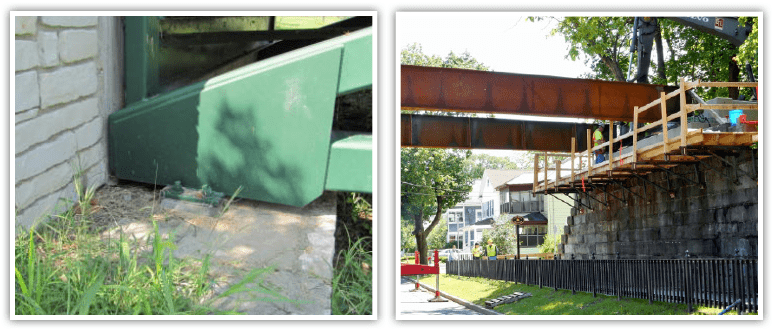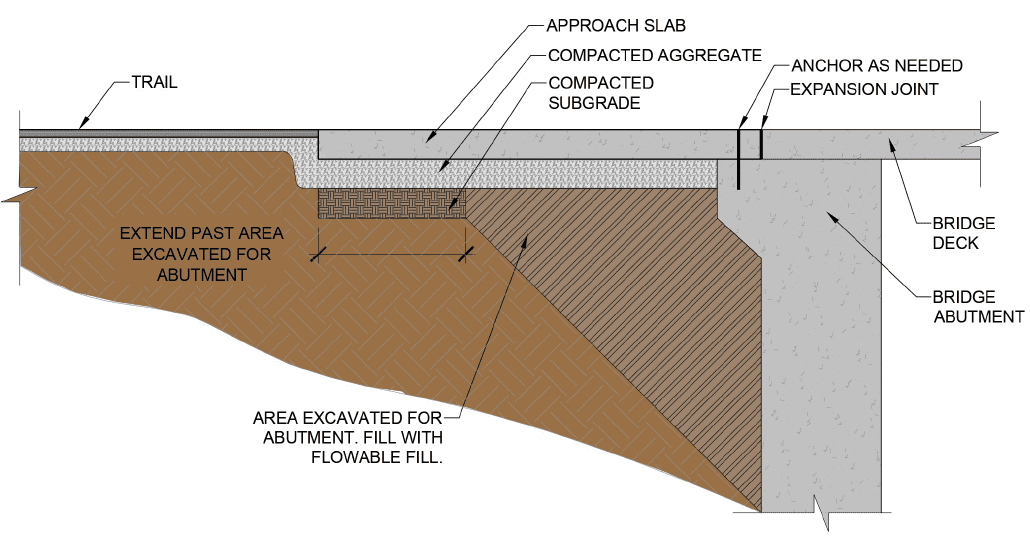A bridge abutment is a structure which connects the deck of a bridge to the ground, at the ends of a bridge span, helping support its weight both horizontally and vertically.
Major Design Considerations include:
- Avoid differential settling of the approach slab (landing) and the bridge deck which can create a trip hazard and mar aesthetics of the trail.
- Avoid shear failures in the approach slab (landing) from improper subsurface support due to poor soils, fill from excavation for the bridge abutment or other factors.
- Approach slab length shall be appropriate to the width of the bridge deck and abutment height as determined by a licensed professional structural engineer.
- Integrate approach slab into the bridge abutment by setting the approach slab into an appropriately sized notch in the bridge abutment. Connect with anchors as needed.
- Subsurface materials below the approach slab shall consist of appropriately compacted soil, aggregate, and flowable fill.
- Extend subsurface configuration to the trail subsurface as needed to avoid area newly excavated for construction of the bridge abutment.
- Another method to ensure a long-term smooth transition from the approach slab to the bridge deck and avoidance of shear failure in the approach slab may be utilized. Alternate method must be designed by a licensed engineer and approved by GRG.
- Follow all ADA requirements.

Bridge abutments provide support for the bridge at each end of the bridge span. Abutment finishes can vary from a simple form finish in a situation where the abutment will not be visible to public, to patterned form-liner or stone veneer finishes in areas of high visibility.
STANDARD PLAN DIAGRAM

